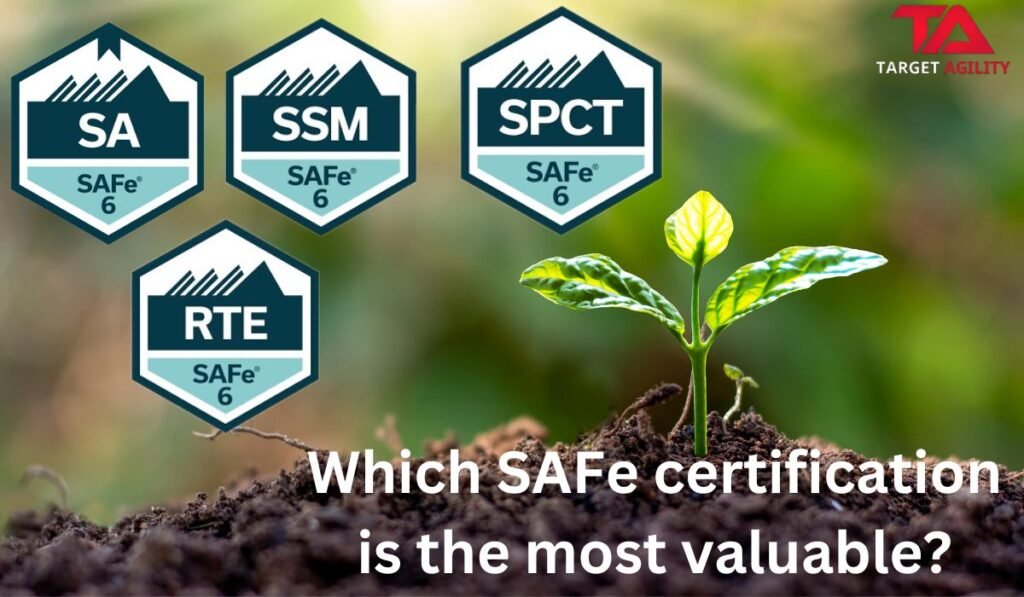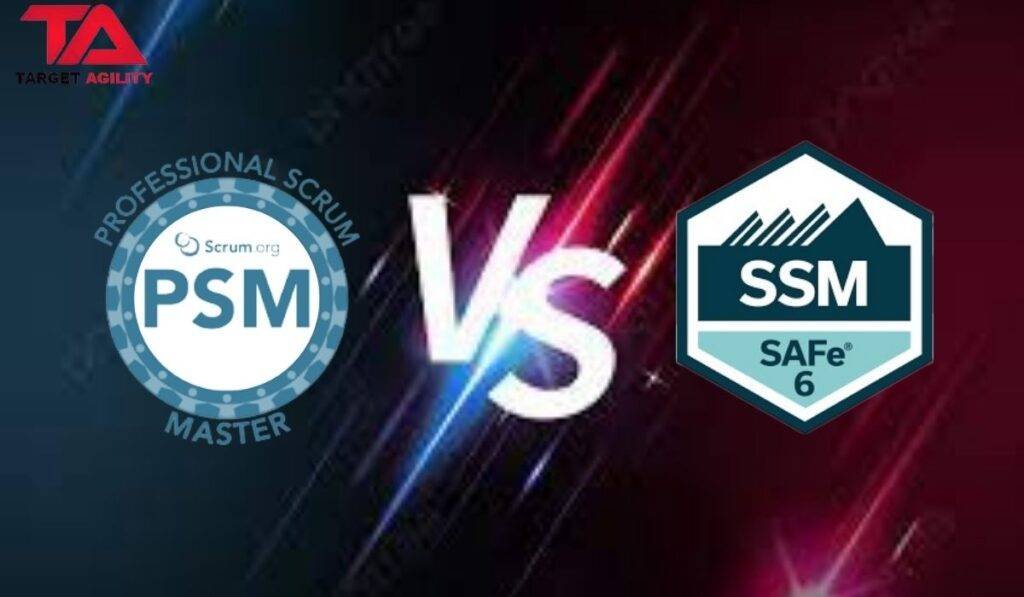Ethical and Practical Implications of AI in Agile Roles

AI isn’t just a future idea—it’s already here, working in Agile teams every day. From organizing backlogs to generating sprint reports, tools like ChatGPT, Jira automation, and AI analytics are making work faster and more data-driven. But there’s a common misunderstanding: If AI can do all this, do we still need Product Owners or Scrum Masters? The truth is, yes, we do. AI can process information faster than any person, but it can’t replace human creativity, empathy, or ethical judgment. These human skills are still essential for Agile leadership. AI is great at practical tasks. It can rank backlog items based on value and risk, predict team speed using past work, create automated progress updates, and spot risks early. This is useful because it removes repetitive work, allowing people to focus on strategy and relationships. But deciding why a feature should be built, how it should change with the market, or how to solve a conflict still needs human thinking. For Product Owners, the role is more than keeping a list of features. They are the voice of the customer and the vision for the product. AI can suggest features, predict returns, and even write user stories, but it cannot truly understand human needs, balance competing demands, or make moral decisions. For example, AI might suggest a feature that keeps users on an app longer but takes advantage of addictive behavior. A human Product Owner can reject it because it goes against company values—AI has no moral compass unless we design it, and even then, ethics depend on the situation. For Scrum Masters, their role isn’t just running meetings. They lead by serving the team, protecting their well-being, and helping them improve. AI can look at data from past sprints, suggest process changes, and track workloads. But it can’t see when someone is stressed but staying quiet, help solve personal disagreements, or change its style based on the team’s emotions. Agile is about people, and that human connection is something AI can’t copy. As AI becomes a normal part of Agile, ethical responsibility becomes more important. Product Owners and Scrum Masters need to check AI’s recommendations for bias, make sure decisions can be explained, and keep control in human hands. Without human oversight, Agile risks becoming a system that values speed over sustainability and profit over people. The future isn’t about AI replacing humans—it’s about working together. AI should handle repetitive, data-heavy tasks, while humans focus on creativity, vision, and ethical choices. Agile leaders should also understand how AI works, not to build it, but to challenge and guide its results. AI will change Agile, but it won’t replace the people who make it human. Product Owners and Scrum Masters are still the moral guide, the creative driver, and the emotional support for their teams. Remove them, and you risk building the wrong product for the wrong reasons in a way that damages trust. Keep them, supported by AI, and you get both speed and heart.
SAFe in Government and Regulated Industries

Agile practices like Scrum are becoming more common in government offices and highly regulated industries like healthcare, banking, and defense. But many people still think Agile can’t work in these areas because of strict rules, documentation, and long approval processes. That’s where SAFe (Scaled Agile Framework) helps. SAFe lets large organizations use Agile while still meeting compliance needs, delivering high-quality products, and keeping everyone aligned. In 2025, more and more regulated businesses are realizing that Agile and compliance can work together. Why These Industries Need SAFe Government and regulated industries often rely on old ways of working—long planning cycles, strict approvals, and fixed budgets. This slows down delivery and increases the chance of delivering outdated or low-value solutions. SAFe helps by offering: SAFe modernizes the system without removing control. SAFe Practices That Work Well in Regulated Fields Common Problems and How to Solve Them Problem: “Agile = No Control” Some think Agile means chaos. But SAFe has clear plans, roles, and responsibilities. In fact, it improves visibility for leaders. ✅ Tip: Use SAFe roles like Product Manager or Release Train Engineer to track work and report updates. Use Lean Portfolio Management (LPM) for managing funding and approvals. Problem: “We Need Documentation” Agile avoids over-documenting, but regulated industries must keep records. ✅ Tip: Use Agile tools like Jira Align to keep digital records of everything—requirements, changes, tests, and decisions. This meets documentation rules without wasting time. Problem: “Our People Don’t Want to Change” Government teams and large enterprises may be used to top-down control and fixed plans. ✅ Tip: Start small with a pilot Agile Release Train (ART), show the results, and train leaders. Change becomes easier when people see the benefits. Real-Life Example A national health department wanted to upgrade its tech systems while meeting strict health data laws. Using SAFe, they delivered working updates every 8 weeks instead of waiting a full year. Compliance was tracked in real time using Agile tools, and feedback was gathered early. This saved time, reduced risk, and met legal needs—all while delivering faster. Tips for Success in Regulated Settings Final Thoughts SAFe helps regulated industries become faster and more flexible while still following the rules. It gives teams the tools they need to build, test, and deliver valuable work without skipping important steps like compliance, audit, and reporting. With the right setup, even government and tightly regulated industries can become Agile—not by ignoring the rules, but by working smarter within them.
Top Scrum Master Interview Questions in 2025 (With Tips)

The role of a Scrum Master has grown significantly in recent years. It’s no longer just about running stand-ups or facilitating retrospectives. In 2025, organizations expect Scrum Masters to guide teams, influence leadership, drive agile transformation, and sometimes even understand AI-driven workflows. If you’re preparing for a Scrum Master interview, it’s essential to go beyond textbook answers. Here are the top Scrum Master interview questions being asked in 2025 — and what interviewers are really looking for. 🔹 1. How do you handle resistance to Agile from senior leadership? Why they ask: Companies still struggle with top-down resistance to Agile. Interviewers want to know if you can communicate value to leadership without creating conflict. Pro Tip: Share real-life examples, and talk about how you used metrics, workshops, or pilot teams to earn buy-in. 🔹 2. What metrics do you use to measure team performance in Scrum? Why they ask: Velocity alone is no longer enough. Modern teams focus on value, predictability, and team health. Answer Tip: Mention cycle time, lead time, escaped defects, team happiness, and sprint goal success. Explain why you choose specific metrics based on the team’s maturity. 🔹 3. How do you coach a team that’s doing Scrum only in name (ScrumBut)? Why they ask: Many teams adopt Scrum ceremonies without embracing Agile principles. Pro Tip: Talk about helping teams understand the “why” behind Scrum, running workshops, or improving cross-functional collaboration. 🔹 4. How do you facilitate remote or hybrid sprint events effectively? Why they ask: Remote work is still the norm in many industries in 2025. What to include: Tools (like Miro, Zoom, Mural, or Slack), time-boxing, rotating facilitators, and strategies for inclusive participation. 🔹 5. What’s the biggest mistake you made as a Scrum Master, and what did you learn? Why they ask: Self-awareness and growth mindset are critical. Answer Tip: Be honest. Reflect on what went wrong and how you handled it. This shows maturity and continuous improvement. 🔹 6. How do you handle a Product Owner who micromanages the team? Why they ask: Collaboration between PO and team can make or break productivity. What to say: Talk about facilitating boundary-setting conversations, clarifying roles, and encouraging trust-based collaboration. 🔹 7. How do you support a team that is consistently missing sprint goals? Why they ask: They want to see your coaching and problem-solving skills. Best approach: Explain how you might explore root causes (overcommitment, unclear stories, lack of focus), facilitate retrospectives, and help the team recalibrate expectations. 🔹 8. What’s your approach to handling team conflict? Why they ask: Conflict is normal. Interviewers want to know if you can manage it constructively. Answer Tip: Mention active listening, 1-on-1s, root cause analysis, and creating psychologically safe environments. 🔹 9. How do you balance servant leadership with delivery pressure from stakeholders? Why they ask: This question tests your leadership style and stakeholder management. What to say: Show that you protect the team’s focus, manage stakeholder expectations, and act as a bridge—not a barrier—between delivery and agility. 🔹 10. How do you stay up-to-date with Agile trends and practices? Why they ask: Continuous learning is key for any good Scrum Master. Pro Tip: Mention following thought leaders on LinkedIn, attending meetups, reading blogs (like Scrum.org, Agile Alliance), or completing certifications like PSM II or SAFe. Conclusion In 2025, being a Scrum Master is about more than frameworks and rituals. It’s about agile leadership, emotional intelligence, communication, and adaptability. Employers look for real-world experience, the ability to coach teams, and a mindset focused on continuous improvement. If you’re preparing for an interview, don’t just memorize answers — reflect on your real experiences. Interviewers want authenticity, not theory. Want more questions <<click here>>
SAFe 6.0 Updates in 2025 – What’s New and What’s Old

The Scaled Agile Framework (SAFe) helps large companies manage their agile practices across many teams. In 2025, SAFe 6.0 has been updated with new ideas to match today’s fast-changing world. With AI, changing markets, and remote work, SAFe has made some big changes. Let’s look at what’s new and what’s no longer recommended. ✅ What’s New in SAFe 6.0 (2025) 1. Using AI to Help Make Decisions SAFe now supports using artificial intelligence (AI) and data tools to make better and faster decisions. This includes things like automatically prioritizing work and predicting delays. What this means: Teams can use tools like dashboards and AI to plan more effectively. 2. More Focus on the Customer SAFe is encouraging teams to stay closer to their customers. This includes using design thinking, empathy mapping, and gathering feedback regularly. What this means: Product Owners and team leads should spend more time talking to customers and understanding their needs. 3. Teams Make More Decisions SAFe now promotes team-level decision-making, instead of waiting for approvals from top management. What this means: Agile Release Trains (ARTs) can make faster decisions and respond more quickly to change. 4. Flexible Budgets Instead of setting a yearly budget, SAFe supports dynamic funding. This means money can be moved based on progress and changing needs. What this means: Leaders need to be ready to adjust funding regularly instead of sticking to a fixed plan. 5. New Skill: Agile Resilience A new skill called Agile Resilience has been added. This focuses on helping teams stay strong and flexible during tough times or big changes. What this means: Leaders should now support both productivity and emotional well-being. 🗑️ What’s Outdated or Less Useful Now ❌ 1. Too Many Fixed Roles Earlier versions of SAFe gave strict definitions to roles like Scrum Master or RTE. Now, SAFe says it’s better to adjust roles to fit your company’s needs. Why this changed: Too many rigid roles slowed teams down and caused confusion. ❌ 2. Strict Portfolio Control Older SAFe versions required tight control at the top levels. The 2025 update supports lean governance, where teams are trusted to make decisions. Why this changed: Too much control reduced speed and team motivation. ❌ 3. Annual Planning Events SAFe is moving away from once-a-year PI planning. Instead, it encourages shorter and more frequent planning, sometimes done online or in small sessions. Why this changed: In today’s fast-paced world, yearly plans become outdated quickly. 👉 What Should You Do Now? If you’re using SAFe in your organization, this is a good time to: SAFe 6.0 in 2025 is more than a framework. It’s a guide to running modern, flexible, and customer-focused organizations. Conclusion Agile isn’t just a set of steps anymore—it’s a mindset. The 2025 updates to SAFe 6.0 push companies to be more flexible, customer-focused, and tech-savvy. The teams that adapt to these changes will lead the way in their industries.
Outcome Over Output – Focus on Value, Not Just Delivery

In today’s world, many companies are trying to move faster. Teams build and release new features, apps, or services more quickly than ever before. But here’s a key question: Are we actually making things better for the users or the business? That’s where the idea of “outcome over output” becomes important. What’s the Difference Between Output and Outcome? Output means the things a team creates or delivers — like a new website feature, a mobile app update, or a report. These are the actual products or tasks completed. Outcome means the results or impact of those outputs. In other words, what changed because of what we delivered? For example, if a team adds a new search feature to a website, that’s an output. But if that new feature helps users find products faster and increases sales, that’s the outcome. So, outputs are about doing, and outcomes are about achieving. Why Is Outcome More Important? When teams focus only on outputs, they may keep building things without checking if they’re useful or helpful. This can turn them into a “feature factory,” just adding more features without knowing if users actually need them. Focusing on outcomes helps teams: This leads to more meaningful work and better results. A Real-Life Example Imagine a team builds a chatbot to reduce customer support calls. They release the chatbot — that’s an output. But after a few weeks, they find out customers still call support because the chatbot is confusing. In this case, even though the team delivered something, it didn’t help reduce calls — the outcome was not achieved. This shows why simply delivering something isn’t enough. What truly matters is the result it creates. How to Focus on Outcomes To shift from output-focused to outcome-focused work, try these steps: Common Challenges Switching to outcome-based thinking isn’t always easy. Many teams are used to being measured by how much they do — like how many tasks they complete or how fast they work. Changing this mindset takes time and support from leaders. Teams also need the right tools and time to track outcomes and talk to users. In the beginning, it might feel slower. But in the long run, this approach helps teams build things that truly matter. Conclusion Today, speed is important — but value is even more important. Delivering a lot of features doesn’t mean much if they don’t help users or improve the business. By focusing on outcomes over outputs, teams can make sure they’re not just working hard, but also working smart. It’s about creating real impact, not just checking off tasks. Remember: Don’t just build more. Build what matters.
The Role of Leadership in Agile Adoption (Made Simple)

Agile is more than just a process or a set of meetings. It’s a way of thinking and working that helps teams deliver better results, faster. But for Agile to really work, it needs support from the top. That’s why leadership plays such an important role in Agile adoption. In this blog, let’s look at how leaders help teams succeed with Agile — and what can go wrong if leadership isn’t involved. Why Leaders Are Important in Agile When a company decides to “go Agile,” it usually means changing how teams work. But these changes don’t just happen on their own. Teams need support, guidance, and encouragement. That’s where leaders come in. Without strong leadership, Agile can easily turn into just a buzzword. Teams may go through the motions, like holding stand-up meetings, but never truly see the benefits of Agile — such as faster feedback, better teamwork, or happier customers. What Great Agile Leaders Do 1. Share a Clear Goal Good leaders explain why the company is adopting Agile. Is it to deliver faster? Improve quality? Respond quickly to market changes? When teams understand the purpose, they feel more motivated and focused. 2. Show Agile Behaviors Themselves Leaders must lead by example. That means: When leaders act this way, teams are more likely to follow and build trust. 3. Make Teams Feel Safe Agile teams need to feel safe to try new things, ask questions, and make mistakes. Great leaders create a safe environment where learning is more important than blame. This helps teams grow and improve. 4. Remove Problems That Block Progress Sometimes, teams want to work in an Agile way but face issues — like outdated rules, long approval processes, or too many meetings. Agile leaders step in and help solve these problems. They don’t just tell teams to go faster — they remove the things slowing them down. 5. Support Learning and Growth Agile is a journey. Teams need time, training, and support to get better. Good leaders: When leaders invest in people, teams become stronger and more confident. What Happens If Leadership Is Missing? When leaders don’t support Agile properly, a lot can go wrong: In short, without leadership, Agile doesn’t last. Conclusion Adopting Agile isn’t just a team-level change — it’s an organization-wide shift. And that shift has to start with leadership. Leaders must do more than just say, “Let’s be Agile.” They must act in Agile ways, support their teams, remove barriers, and create a culture where learning and improvement are welcome. When leaders take an active role, Agile has a much better chance of working — and teams can truly thrive. If you’re a leader thinking about Agile, remember: you don’t need to know everything. But you do need to care, support your teams, and keep learning along the way.
Building Psychological Safety in Scrum Teams

In Scrum teams, success isn’t just about using the right tools or following the right steps. It’s also about making sure everyone on the team feels safe to share their thoughts, ideas, and even their mistakes. This feeling of safety is called psychological safety. When a team has it, everyone can do their best work. So, how can you build psychological safety in your Scrum team? Let’s break it down. What is Psychological Safety? Psychological safety means that team members feel okay speaking up. They don’t worry about being blamed, judged, or embarrassed if they share their opinions or if they make a mistake. This is really important for Scrum teams because Scrum is all about teamwork, talking openly, and learning from mistakes. If people feel unsafe to speak up, problems go unnoticed, and great ideas stay hidden. Why It’s Important in Scrum Scrum teams need to adapt and work together fast. Here’s why psychological safety helps: ✅ Better teamwork: Everyone can share what they know, so the team makes smarter choices.✅ Learning faster: Mistakes are seen as lessons, not failures.✅ More ownership: When people feel safe, they care more about the team’s success.✅ Happier teams: A safe, supportive environment makes people feel good about their work. Steps to Build Psychological Safety Here are simple things you can do to make your team feel safe: 1️⃣ Be a Role Model If you’re a Scrum Master, Product Owner, or team lead, show that it’s okay to not have all the answers. If you make a mistake or don’t know something, say so! This shows everyone that it’s normal to be honest and open. 2️⃣ Encourage Everyone to Speak In Scrum meetings like Sprint Planning, Daily Stand-ups, Reviews, and Retrospectives, make sure everyone has a chance to talk. Ask: This shows that everyone’s input matters. 3️⃣ Be Curious, Not Critical When someone shares an idea or concern, don’t jump in to judge or shut it down. Instead, ask questions to learn more: This way, people feel safe to keep sharing. 4️⃣ Celebrate Ideas and Learn from Mistakes Thank people when they share ideas, even if they’re small. Celebrate little successes, too. And if there’s a mistake, talk about what you learned from it—not who’s to blame. For example, in Retrospectives, ask “What can we learn from this?” instead of “Who made the mistake?” 5️⃣ Keep Checking In Psychological safety doesn’t happen overnight—it’s something to keep working on. Scrum Masters can ask in Retrospectives: This helps you keep improving as a team. The Scrum Master’s Job The Scrum Master has a big role in building psychological safety. They help protect the team from outside pressure, guide everyone to work together, and make sure all voices are heard. By showing kindness and curiosity, the Scrum Master helps build trust in the team. Conclusion Psychological safety isn’t just something nice—it’s needed for Scrum teams to succeed. When people feel safe to share, they come up with better ideas, help each other out, and make the team stronger. By leading by example, making sure everyone’s voice is heard, and talking about how the team can keep improving, you can build a safe and supportive Scrum team. And when your team feels safe, they’ll be ready to do their best work—together.
How PSPO Certification Boosts Your Product Management Career

Introduction Product management is a fast-growing field, and companies are adopting Agile methods more than ever. To stay ahead, product managers need the right skills and certifications. One of the best-known certifications in Agile is the Professional Scrum Product Owner (PSPO) certification from Scrum.org. The PSPO certification proves that you understand Scrum principles, stakeholder management, and value-based product development. Whether you’re starting in product management or looking to grow your career, this certification can be a game-changer. Let’s explore how PSPO certification can help you become a better product manager and boost your career. 1. Helps You Understand Agile and Scrum Agile development is widely used, and Scrum is one of its most popular frameworks. The PSPO certification teaches you the key Scrum concepts, such as backlog management, stakeholder collaboration, and delivering value incrementally. This helps you align your work with Agile practices, making your product development process more effective. 2. Increases Your Job Opportunities Product management is competitive, and employers look for certified professionals who can apply Agile methods effectively. The PSPO certification makes your resume stand out and shows that you understand Scrum and product ownership. Many companies—especially in tech, healthcare, finance, and retail—prefer hiring certified professionals who can manage Agile teams and lead products successfully. Having this certification can open doors to better job opportunities and higher salaries. 3. Improves Decision-Making and Prioritization One of the biggest challenges in product management is deciding what to work on first. The PSPO certification teaches you how to prioritize tasks based on customer needs and business goals. You’ll learn about Value-Based Prioritization, MoSCoW, and other techniques that help you decide what features and updates will bring the most value. This ensures that your team works on the right things at the right time. 4. Enhances Your Communication With Stakeholders Product managers work with different groups—customers, developers, marketers, and company leaders. The PSPO certification helps you improve your stakeholder communication skills, making it easier to align everyone toward a common goal. You’ll learn how to: These skills help you build strong relationships and ensure that your product meets both business and customer needs. 5. Helps You Deliver More Business Value Being a great product manager is not just about managing a backlog—it’s about delivering real business value. The PSPO certification teaches you how to: With these skills, you can contribute directly to your company’s success and become a more strategic leader in your organization. 6. Supports Long-Term Career Growth The PSPO certification isn’t just about passing an exam—it helps you develop a growth mindset and continuously improve your skills. It can lead to higher positions, such as Senior Product Owner, Product Manager, Head of Product, or even Chief Product Officer (CPO). Additionally, if you want to deepen your knowledge, you can go for advanced certifications like PSPO II and PSPO III, which focus on more advanced product management techniques. Conclusion In today’s Agile-driven world, the PSPO certification is a powerful tool for product managers. It helps you understand Agile, improve decision-making, communicate better with stakeholders, and increase job opportunities. If you’re looking for a way to boost your career, earn more, and become a better product leader, getting PSPO-certified is a smart investment. You can join our session to take the next step and unlock new career possibilities with the PSPO certification!
Scrum Master 2.0: Evolving Role & New Skill Sets

The Shift from a Traditional Scrum Master to an Agile Coach The role of a Scrum Master has undergone a significant transformation over the years. Traditionally, a Scrum Master was primarily responsible for facilitating Scrum ceremonies, removing impediments, and ensuring the team followed Agile principles. However, with the growing complexity of Agile environments and the increasing adoption of Agile beyond IT, the Scrum Master role has evolved into something much more dynamic—an Agile Coach. From Facilitator to Change Agent Scrum Masters today are expected to move beyond mere facilitation and act as change agents within organizations. This shift requires them to foster a culture of continuous improvement, drive Agile maturity, and enable organizational transformation at scale. While traditional Scrum Masters focused on guiding teams, Agile Coaches work across teams, leadership, and even entire enterprises to embed an Agile mindset. The Expanding Responsibilities of a Scrum Master 2.0 Essential Skills for Scrum Masters in 2024 As the role expands, Scrum Masters need to develop new skills that go beyond traditional Scrum facilitation. Here are some of the most crucial skills for Scrum Masters in 2024: 1. Advanced Coaching & Mentoring The ability to coach individuals and teams is critical. Modern Scrum Masters should be proficient in Professional Coaching techniques (e.g., active listening, powerful questioning, and Socratic methods) to help teams unlock their potential. Certifications such as ICP-ACC (ICAgile Certified Professional in Agile Coaching) can be beneficial. 2. Agile & Lean Portfolio Management Organizations are increasingly aligning Agile practices with business strategy through Lean Portfolio Management (LPM). A Scrum Master should understand OKRs (Objectives & Key Results), value stream mapping, and funding models to guide Agile transformations at scale. 3. Psychological Safety & Emotional Intelligence (EQ) High-performing Agile teams thrive in environments of trust and psychological safety. Scrum Masters must cultivate an atmosphere where team members feel safe to experiment, fail, and innovate. Strong emotional intelligence enables them to navigate team conflicts, handle resistance, and foster inclusivity. 4. AI & Agile Automation Knowledge Read our detailed blog here With AI-powered Agile tools becoming mainstream, Scrum Masters should stay updated on platforms like JIRA, Azure DevOps, and Rally and understand how AI-driven insights can improve Agile workflows. Additionally, understanding test automation and CI/CD pipelines can help them align Agile practices with DevOps. 5. Systems Thinking & Organizational Change Management Scrum Masters now need a holistic understanding of how Agile fits into the broader organizational ecosystem. Applying systems thinking helps in identifying bottlenecks beyond just the Scrum team. Change management frameworks like ADKAR (Awareness, Desire, Knowledge, Ability, Reinforcement) can assist in driving Agile adoption across the enterprise. 6. Conflict Resolution & Negotiation Skills Agile transformations often face resistance, whether from leadership, middle management, or teams accustomed to traditional project management. Scrum Masters must develop strong negotiation and conflict resolution skills to align stakeholders and drive change effectively. 7. Value-Driven Mindset & Business Agility A Scrum Master 2.0 must focus on delivering customer value rather than just executing Agile rituals. Understanding Lean Startup principles, Design Thinking, and Agile product ownership can help Scrum Masters contribute to business agility. Conclusion: The Future of Scrum Masters The evolution from a traditional Scrum Master to an Agile Coach marks a significant shift in the Agile landscape. Today’s Scrum Masters are no longer just facilitators; they are organizational catalysts, cultural influencers, and strategic enablers. To stay relevant in 2024 and beyond, Scrum Masters must embrace continuous learning, acquire new skills, and adapt to the ever-changing Agile ecosystem. Whether you’re an aspiring Scrum Master or a seasoned professional, the key to success lies in expanding your skill set, developing a coaching mindset, and driving Agile transformation beyond just the team level. The future of Agile is dynamic, and Scrum Masters 2.0 are at the forefront of shaping it! 📌 Are you ready to upgrade your Scrum Master skills? Let us know in the comments what challenges you face in your Agile journey or the skills you’re focusing on in 2024!
Understanding Flow Metrics in Agile

Agile teams aim to work efficiently and deliver value quickly. Traditional metrics like velocity only measure the speed of work, but they don’t highlight inefficiencies in the workflow. This is where flow metrics come in. Flow metrics track how work moves through a process, helping teams spot delays and improve productivity. Three key flow metrics—Flow Efficiency, Cycle Time, and Throughput—help teams understand and optimize their workflow. Using these, Agile teams can work smarter, remove bottlenecks, and improve delivery speed. What Are Flow Metrics? Flow metrics measure how smoothly work progresses, revealing hidden delays and inefficiencies. Unlike traditional Agile metrics, which focus on estimated progress, flow metrics provide real-time insights into work completion. 1. Flow Efficiency Flow efficiency shows how much time is spent actively working on a task versus waiting. It is calculated as: Flow Efficiency=(Active Work TimeTotal Cycle Time)×100\text{Flow Efficiency} = \left( \frac{\text{Active Work Time}}{\text{Total Cycle Time}} \right) \times 100 A low percentage means too much time is wasted waiting, while a higher number shows a more efficient workflow. 2. Cycle Time Cycle time measures how long it takes to complete a task from the moment work starts. Cycle Time=Completion Date−Start Date\text{Cycle Time} = \text{Completion Date} – \text{Start Date} A shorter cycle time means tasks are completed faster. If cycle time increases, it signals delays in the workflow. 3. Throughput Throughput measures how many tasks are completed in a given timeframe. Throughput=Total Work Items Completed in a Given Time Frame\text{Throughput} = \text{Total Work Items Completed in a Given Time Frame} Consistently high throughput indicates a well-optimized process, while fluctuations may show workflow issues. Why Flow Metrics Matter in Agile Traditional Agile metrics don’t always reveal the reasons behind delays. Flow metrics help teams: How to Improve Agile Workflows with Flow Metrics Conclusion Flow metrics—Flow Efficiency, Cycle Time, and Throughput—help Agile teams work more effectively. By focusing on real-time workflow data instead of just speed, teams can identify and fix inefficiencies, making their processes smoother and more predictable. By applying these metrics, organizations can build a stronger Agile foundation, improving team performance and delivering value to customers faster.
How to Create a Product Roadmap with Scrum Principles

A product roadmap is a simple plan that shows the vision, goals, and priorities for a product over time. It helps teams stay on track and keeps stakeholders informed about the product’s development. By using Scrum principles, your roadmap becomes flexible and responsive to changes while focusing on delivering value to customers. Here’s a straightforward guide to creating a product roadmap with Scrum principles: 1. Define the Product Vision Start by clarifying the product vision. This is the big-picture idea of what you want to achieve with the product. Work with stakeholders, like customers and business leaders, to make sure the vision matches market needs and company goals. 2. Set Key Objectives Break down the product vision into major goals. These objectives outline what you want to achieve and provide direction for the features and tasks in the roadmap. 3. Work with Stakeholders Scrum values teamwork, so involve stakeholders when building the roadmap. Hold meetings to gather input, prioritize goals, and spot potential issues early. This helps create a roadmap that everyone supports. 4. Use the Product Backlog The product backlog is a list of features, improvements, and tasks. Use it as the main source for your roadmap. Prioritize the items based on their value to customers and alignment with your objectives. Scrum’s flexible approach allows you to adjust priorities as things change. 5. Set Timeframes Scrum uses sprints, which are short work cycles (usually 2-4 weeks). For a roadmap, create broader timeframes, like monthly or quarterly periods, to keep planning flexible but structured. 6. Group Items into Epics and Themes Organize roadmap items into epics and themes. Epics are big tasks that span multiple sprints, while themes group related work. This makes it easier to communicate the roadmap without getting into too many details. 7. Create a Visual Roadmap A visual roadmap is easier to understand and share. Use tools like Gantt charts, Kanban boards, or roadmap software to display key milestones, goals, and timeframes clearly. 8. Review and Update Regularly Scrum encourages continuous improvement. Review and update the roadmap regularly to reflect new priorities, market changes, and customer feedback. Schedule reviews during sprint meetings or dedicated roadmap sessions. 9. Be Transparent Scrum values transparency. Share the roadmap with the entire team and other stakeholders to keep everyone aligned. Encourage open communication and feedback to create a sense of ownership. 10. Link the Roadmap to Sprint Goals Make sure the roadmap guides sprint planning and goal setting. The roadmap provides a big-picture view, while sprint goals focus on short-term tasks. This connection helps teams see how their work contributes to long-term success. Conclusion Creating a product roadmap with Scrum principles is a simple way to balance long-term planning with agile execution. By focusing on teamwork, prioritization, and regular updates, you can deliver products that meet customer needs and business goals. Remember, the roadmap is a living document—embrace changes and use them as opportunities to improve.
Agile in Non-IT Sectors: Applying Agile Principles

Agile is often associated with software development, but its principles can be applied to many other fields, like marketing, finance, and healthcare. By focusing on flexibility, teamwork, and customer satisfaction, Agile is helping different industries work more effectively and adapt to changes faster. What is Agile? Agile is a way of working that prioritizes people, collaboration, and quick responses to change. Instead of sticking to rigid plans, Agile teams break big projects into smaller tasks and work on them step by step. This makes it easier to adjust to new information and deliver results that matter to stakeholders. Marketing: Flexible Strategies for Fast-Changing Markets Marketing is a fast-moving field where trends and customer preferences change quickly. Agile marketing helps teams respond to these changes effectively by using short-term planning and regular check-ins. This approach helps: For example, a content team can use Agile to plan, create, and share content in short cycles. Regular reviews help them see what works and adjust their approach. Finance: Smarter Planning and Risk Management Finance is often seen as a rigid field, but Agile can make it more flexible. Finance teams can use Agile to manage risks, improve forecasts, and allocate resources more effectively. They can: Many finance teams use tools like Kanban boards to track progress and keep everyone on the same page. Healthcare: Better Care Through Teamwork Healthcare is a complex field with constant demands. Agile helps improve patient care and streamline operations by focusing on collaboration and adaptability. Key benefits include: For instance, hospitals can use Agile to manage projects like introducing new health record systems or launching public health programs. Challenges of Using Agile Outside IT Adopting Agile in non-IT fields comes with challenges: To overcome these challenges, organizations need to focus on change management, provide training, and adapt Agile practices to suit their specific needs. Conclusion Agile’s focus on flexibility and delivering value makes it useful in many fields beyond IT. Whether it’s creating better marketing campaigns, improving financial planning, or enhancing patient care, Agile helps teams work more efficiently and adapt to change. By adopting Agile principles, non-IT industries can boost collaboration, innovation, and success in today’s fast-changing world.
Business Agility: Staying Flexible, Adaptable, and Ready for Change

In today’s fast-changing world, businesses face new challenges and opportunities every day. With new technologies, shifting customer expectations, and global market changes, companies need more than just efficiency to succeed. They need business agility—the ability to adapt, respond, and thrive in any situation. What is Business Agility? Business agility means more than just following agile methods in software development. It’s about building a flexible and adaptive organization. It focuses on creating a culture where quick decisions, learning, and innovation happen across the company. Key parts of business agility include: Why Business Agility is Important Organizations that adopt business agility enjoy several benefits: How to Become More Agile Becoming an agile business takes effort and planning. Here are some steps to get started: Examples of Business Agility Here are a few companies showing the power of agility: The Future of Business Agility As the world keeps changing faster, agility will be essential for success. Businesses must see agility as an ongoing process, not a one-time effort. This means constantly evaluating, improving, and building a culture of resilience and innovation. In summary, business agility is key to surviving and thriving in an unpredictable world. By staying flexible, adaptable, and responsive, companies can handle uncertainty, seize new opportunities, and secure long-term success.
Simplifying SAFe® DevOps

In today’s fast-moving world, businesses need to deliver high-quality software quickly. To make this happen, teams must work together better and streamline their processes. SAFe® DevOps provides a clear way to connect development (Dev) and operations (Ops) teams, helping them deliver software faster, more efficiently, and with fewer issues. What is SAFe DevOps? SAFe DevOps is a part of the Scaled Agile Framework® (SAFe), designed to bring development and operations teams together. It focuses on improving teamwork, automating processes, and speeding up how software moves from an idea to a finished product. The goal is to break down barriers between teams and ensure everyone works toward delivering value to customers. Key Features of SAFe DevOps Benefits of SAFe DevOps How to Start with SAFe DevOps Challenges in SAFe DevOps Switching to SAFe DevOps isn’t always easy. Teams might resist change, silos can be hard to break, and automating old systems can be tricky. However, with good leadership, training, and a focus on continuous improvement, these challenges can be overcome. Conclusion SAFe DevOps combines the agility of DevOps with the scalability of SAFe, making it perfect for large organizations. It helps teams work together better, deliver software faster, and respond quickly to customer needs. By adopting SAFe DevOps, businesses can stay competitive and deliver value efficiently in today’s fast-paced world.
Challenges Faced by Scrum Masters and How to Tackle Them

A Scrum Master has a big job guiding teams through Agile methods, keeping them productive, and making sure they follow Scrum rules. Even experienced Scrum Masters face challenges, but here are some common ones and ways to handle them. 1. Managing Stakeholder Expectations Scrum Masters often struggle with balancing what stakeholders want and what the team can realistically deliver. Stakeholders may push for quick results or extra features, which can overwhelm the team and lead to burnout. Solution: Open communication is key. Scrum Masters should keep stakeholders informed about the team’s capacity and show how adding extra work impacts deadlines. Using charts or data like team velocity can help stakeholders see what’s realistic. Educating stakeholders on Agile values, such as working at a sustainable pace, can also make a big difference. 2. Dealing with Resistance to Change Teams used to traditional project management may resist Agile methods, feeling uncomfortable with new roles or frequent check-ins. This can lead to skipped meetings or doubts about the Agile approach. Solution: Scrum Masters should be patient, acting as coaches. Hold workshops to explain Agile basics and show how Scrum benefits the team, such as by enabling quick feedback. Encourage the team to try new things and adapt slowly, celebrating small successes along the way to build trust in the process. 3. Ensuring Team Collaboration Sometimes team members don’t collaborate well, especially in remote teams. Miscommunication, delays, and working in silos can slow down the process. Solution: Scrum Masters can promote teamwork by organizing team-building activities and setting up clear channels for communication. Daily stand-ups and regular retrospectives help team members share updates and voice issues. For remote teams, use tools that support collaboration and establish communication guidelines. Building a supportive environment where everyone feels comfortable sharing can also boost collaboration. 4. Managing Scope Creep In Agile, flexibility can sometimes lead to “scope creep,” where extra features are added continuously. This often happens when priorities aren’t clear, putting pressure on the team. Solution: Scrum Masters should work closely with the Product Owner to keep the backlog organized and prioritize tasks based on value. Remind the team of the sprint goal and help them commit only to tasks they can complete in the sprint. For new requests, explain their impact on current work and suggest adding them to future sprints. 5. Handling Conflicting Personalities Teams are diverse, with members bringing different perspectives and working styles. Conflicts can arise, affecting teamwork and productivity. Solution: Scrum Masters should promote respect and open communication. Encourage team members to express their ideas and address conflicts openly. Private coaching sessions may also help. Setting team rules and modeling respectful behavior can guide the team toward healthier collaboration. 6. Promoting Continuous Improvement Teams can become comfortable and stop seeking improvements, which can reduce productivity over time. Solution: Scrum Masters should make retrospectives a safe, engaging space for feedback. Try different retrospective formats to keep them fresh and encourage honest reflection. Set improvement goals and check in on them in the next sprint. Supporting continuous learning and adapting based on feedback can keep the team motivated and productive. Conclusion Being a Scrum Master has challenges, from managing expectations to encouraging teamwork. But with clear communication, patience, and dedication to Agile principles, these challenges can become growth opportunities. Overcoming these obstacles helps the team work better together, adapt to change, and deliver quality results, making Agile truly effective.
Essential Skills Every Scrum Master Needs

A Scrum Master plays a key role in helping teams work well within Agile practices, especially when using Scrum. They’re not just in charge of meetings but support the whole team and organization to follow Agile principles effectively. Here are the main skills a good Scrum Master needs. 1. Facilitation and Communication Skills A Scrum Master runs meetings like sprint planning, daily stand-ups, sprint reviews, and retrospectives. They make sure these meetings are focused, organized, and productive. This means they need to guide discussions and encourage everyone to participate. Communication is essential because the Scrum Master acts as a bridge between the development team, the Product Owner, and other stakeholders. They should explain things clearly, avoid jargon, and ensure everyone is working toward the same goals. 2. Coaching and Mentoring A big part of the Scrum Master’s job is to coach and support the team. They help team members understand and use Agile principles, encouraging them to take charge of their work. Rather than giving answers directly, they guide the team with questions, helping them find solutions themselves. This approach builds a culture of learning and growth, which is important for Agile teams. 3. Conflict Resolution and Negotiation Conflicts happen in any team, and a Scrum Master should know how to resolve them positively. Whether it’s disagreements over priorities, resources, or personal differences, they need to manage conflicts calmly and fairly. This involves listening actively, showing patience, and having a problem-solving attitude. Scrum Masters also act as neutral helpers, allowing team members to express their concerns and work toward a solution together, keeping the team unified. 4. Servant Leadership Being a Scrum Master is about servant leadership—empowering the team rather than managing or controlling them. They focus on supporting the team by removing roadblocks and helping them work smoothly. A servant leader puts the team’s needs first, builds trust, and creates a safe environment. They protect the team from distractions so they can stay focused on delivering results for the customer. 5. Knowledge of Agile and Scrum While people skills are crucial, a Scrum Master also needs a solid understanding of Agile principles and the Scrum framework. They should know what each part of Scrum is for, like the product backlog, sprint backlog, and increment, and how to manage these effectively. They should be comfortable using tools like story mapping and tracking velocity to help the team make decisions. They should also adjust these practices to fit the unique needs of the team and organization. 6. Adaptability and a Focus on Improvement Adaptability is key in Agile environments. A good Scrum Master is open to change and always looking for ways to improve. They should keep learning, stay updated on new Agile ideas, and refine their own approach. By being adaptable and showing a commitment to improvement, they encourage the team to stay flexible and improve over time. In short, a Scrum Master needs a blend of skills: good communication, conflict resolution, a deep understanding of Agile and Scrum, and a focus on serving the team. By mastering these skills, Scrum Masters can help the team work together effectively, deliver quality results, and create real value for the organization and its customers.
How to Make Daily Scrum Meetings More Interesting

Daily Scrum meetings are essential in Agile project management, helping teams stay on the same page, share updates, and adjust plans when needed. However, these meetings can sometimes become boring or feel repetitive. When this happens, people might lose focus, and the meeting may not provide as much value. So, how can we make daily Scrums more engaging and enjoyable? Here are some simple tips to keep your daily Scrum meetings interesting and productive: 1. Keep It Short and Focused A daily Scrum should be quick and to the point—no more than 15 minutes. If it regularly takes longer, it’s likely losing the team’s attention. Stick to the core questions:What did you do yesterday? What will you do today? Do you have any blockers? Encourage brief updates and avoid lengthy discussions. Keeping the meeting short and focused ensures it remains energizing, not tiring. 2. Mix Up the Meeting Format Doing the same thing every day can get boring. Try changing how you run the meeting now and then. Changing the routine makes the meeting less predictable and keeps the team engaged. 3. Use Visual Tools Using visuals during Scrum can make the meeting more dynamic. If you’re working with digital tools like Jira, Trello, or Asana, display them on a screen and walk through the tasks. Visual aids help clarify what’s being discussed and keep everyone interested. For virtual teams, try using fun virtual backgrounds or team avatars to create a more interactive experience. 4. Celebrate Small Wins While Scrum is mostly about tracking progress and solving problems, don’t forget to celebrate achievements, no matter how small. Whether it’s finishing a task or overcoming a challenge, take a moment to recognize these wins. A simple acknowledgment or quick round of applause can lift the team’s spirits and make the meeting more enjoyable. 5. Rotate the Scrum Master Role Let different team members take turns leading the Scrum. This brings fresh perspectives and energy to the meeting. Each person might have a different style of running the meeting, which keeps things from getting stale. It also promotes a sense of shared responsibility within the team. 6. Tackle Blockers Effectively Blockers (things stopping progress) are a key part of Scrum. However, if the same blockers come up day after day without any resolution, it can frustrate the team. Make sure blockers are addressed quickly, either in the meeting or right after. This shows the team that the Scrum is a useful tool for solving problems, not just a daily task to check off. 7. Add Some Fun A little fun can go a long way in making Scrum more enjoyable. Here are some simple ideas: 8. Encourage Team Interaction Scrum shouldn’t just be about giving updates to the Scrum master. Encourage team members to talk to each other, offer help, or brainstorm ideas together during the meeting. This makes the Scrum more about teamwork and collaboration, rather than just individual status reports. Conclusion Making daily Scrum meetings interesting doesn’t require big changes. By keeping them short, using visuals, rotating roles, and adding a bit of fun, you can create a meeting that your team looks forward to. Scrum is meant to be valuable and productive, and with these small adjustments, you can make sure it benefits everyone involved.
Why Choose ICAgile: A Simple Guide to Elevating Your Agile Skills

In today’s fast-changing world, businesses are constantly seeking ways to improve and adapt. Agile methodologies have become a go-to choice for companies looking to manage projects more effectively, enhance teamwork, and deliver value faster. Among the many Agile certification options, ICAgile (International Consortium for Agile) stands out for its learner-focused and flexible approach. Here are some key reasons why ICAgile is a great choice for advancing your Agile skills and mindset. 1. Focus on Practical Learning ICAgile takes a different approach to learning compared to many other certification programs. Instead of focusing on exams and memorizing facts, ICAgile emphasizes real-world experience and deep understanding. The goal is to help people truly learn by doing, not just studying. The courses encourage hands-on practice and reflection, helping learners develop skills they can apply to actual projects. This makes ICAgile certifications more than just a piece of paper; they represent real knowledge and a genuine Agile mindset. 2. Variety of Learning Paths ICAgile offers a wide range of learning tracks tailored to different roles and needs within the Agile world. Whether you’re a project manager, a business analyst, a developer, or a leader, ICAgile has a course designed just for you. The two main paths are: Within these paths, you can choose from specializations like Agile Coaching, Team Facilitation, or Leadership. ICAgile certifications are structured to allow you to advance from beginner to expert as you grow, giving you a clear way to improve your skills over time. 3. Globally Recognized ICAgile certifications are respected worldwide. As Agile becomes more popular across industries, having a globally recognized certification can help you stand out in your career. ICAgile-certified professionals are known for not just understanding Agile principles but also for applying them effectively in their work. With training partners around the globe, ICAgile certifications are valued in many regions and industries, from tech to marketing and even HR. 4. Staying True to Agile Values ICAgile’s training programs focus on the core values and principles of the Agile Manifesto. This means that the certification is not just about using tools or following processes; it’s about understanding the human side of Agile, such as teamwork, flexibility, and delivering value. By choosing ICAgile, you’re aligning with an organization that values collaboration, adaptability, and continuous improvement. It’s not just about “doing Agile” but about “being Agile” in your mindset and approach. 5. Flexible Training Options ICAgile is known for its flexibility. Instead of having one fixed curriculum, it sets learning objectives and allows its accredited partners to create courses that meet those goals. This means you can find training that suits your industry or personal preferences. Additionally, ICAgile certifications don’t expire. Unlike other certifications that require you to retake exams or pay renewal fees, ICAgile certifications last a lifetime. This approach supports continuous learning, allowing you to focus on growing your skills instead of worrying about renewals. 6. Commitment to Continuous Improvement One of the key ideas behind ICAgile is continuous learning and improvement. Their courses encourage learners to reflect on their experiences, learn from them, and make changes as needed. This focus on growth ensures that Agile professionals can adapt to changes in their business environment and keep improving their skills. This mindset is ideal for Agile professionals who want to not only improve their processes but also drive innovation in their organizations. ICAgile helps Agile practitioners stay ahead of trends and best practices by fostering a culture of learning and improvement. Conclusion ICAgile offers a flexible, practical, and values-driven approach to Agile certification. Whether you’re just starting out or you’re already an experienced Agile practitioner, ICAgile provides a pathway to deepen your skills and adopt a lasting Agile mindset. By choosing ICAgile, you’re not just earning a certification—you’re gaining real-world knowledge and tools that will benefit both your career and your organization. “Click here to Join our ICAgile-certified course to master Agile skills and boost your career!”
What is the Benefit of CSPO Certification?

The Certified Scrum Product Owner (CSPO) certification helps professionals understand and excel in the role of a Product Owner within a Scrum team. Offered by the Scrum Alliance, this globally recognized certification is great for anyone involved in product development and management. Here are some key benefits of earning a CSPO certification: 1. Clear Understanding of the Product Owner Role The CSPO certification teaches you exactly what a Product Owner does. You’ll learn how to manage the product backlog, prioritize tasks, and work closely with different stakeholders. Since the Product Owner is responsible for delivering the right features at the right time, this certification helps you refine the skills needed to balance customer needs with business goals. 2. Better Job Opportunities Getting a CSPO certification can open up new career paths. Many companies are adopting agile frameworks, and there is a growing demand for skilled Scrum Product Owners. Having this certification on your resume shows employers that you understand Scrum and can effectively manage product development teams. This can lead to job roles in product management, project management, or business analysis. 3. Improved Team Collaboration A key part of the Product Owner’s job is to ensure good communication between the development team and stakeholders. With CSPO training, you’ll learn how to keep everyone aligned on project goals and priorities. This makes it easier to work with cross-functional teams and ensure that the product development is moving in the right direction. 4. Better Knowledge of Agile Practices As agile methods like Scrum are becoming common in many industries, CSPO certification helps you deepen your understanding of agile practices. You will learn how to apply Scrum in your organization to deliver products more efficiently. Even if you’re already familiar with Scrum, the certification will give you advanced insights into managing agile product development. 5. Higher Salary Potential Certified Scrum Product Owners often earn more than those without certification. Since the CSPO brings specialized skills to the table, companies are willing to pay a premium for certified professionals. This makes it a valuable investment if you’re looking to grow in your career and earn a higher salary. 6. Ability to Adapt to Change In today’s fast-changing business world, customer needs and market conditions can shift quickly. The CSPO certification prepares you to adapt to these changes efficiently. You’ll learn how to be flexible in adjusting priorities and guiding your team to respond quickly to new business opportunities or market trends. Conclusion The CSPO certification offers numerous benefits, from improving your job prospects to equipping you with essential skills for managing product development. It also helps you communicate better with teams and stakeholders, stay updated with agile practices, and adapt to changes in the business environment. Overall, it’s a great way to strengthen your role as a Product Owner and deliver high-value products more effectively. “Kick Start Your Journey with Our CSPO Certification Course click here.”
What Is a Release Train Engineer: Roles, Responsibilities, & Skills

A Release Train Engineer (RTE) plays a key role in Agile frameworks, particularly in the Scaled Agile Framework (SAFe). The RTE is like the head Scrum Master, overseeing a group of teams called the Agile Release Train (ART), which work together to deliver value consistently. The RTE’s job is to ensure that everything runs smoothly, teams stay aligned, and they meet the organization’s goals. In this blog, we’ll break down the RTE’s roles, responsibilities, and the skills they need. What Does a Release Train Engineer Do? The main job of an RTE is to make sure the Agile Release Train (ART) runs effectively. This involves helping teams stay in sync, solving issues, managing risks, and promoting collaboration. Here are some important tasks RTEs handle: Responsibilities of a Release Train Engineer An RTE’s responsibilities cover both the day-to-day operations of the Agile Release Train and the overall success of the program. Key responsibilities include: Skills Needed for a Release Train Engineer An effective Release Train Engineer needs a combination of technical knowledge, leadership, and communication skills. Some of the essential skills include: Conclusion The Release Train Engineer is essential to the success of the Agile Release Train in a SAFe setup. They ensure teams are aligned, risks are managed, and value is consistently delivered. Understanding the RTE’s roles, responsibilities, and necessary skills helps organizations run more efficient Agile processes and continuously improve their work. “Ready to kickstart your RTE journey? Click here to begin your adventure!”
How OTT Platforms Use Agile Methods to Deliver Better User Experiences

Over-The-Top (OTT) platforms like Netflix, Amazon Prime, and Disney+ have changed how we watch TV shows and movies. To keep their users happy, they need to keep up with changes in technology and what viewers want. One of the best ways to do this is by using Agile methods. Agile is an approach that helps teams work faster, be flexible, and make improvements quickly. What is Agile? Agile is a way of working that focuses on breaking big tasks into smaller, manageable parts. Teams work on these small parts in short time periods called “sprints.” After each sprint, they review their work and make changes if needed. Agile allows teams to adapt to changes quickly and improve their work continuously. For OTT platforms, this means they can respond to feedback, try new ideas, and improve the user experience regularly. How Agile Helps OTT Platforms Improve User Experience OTT platforms have to keep adding new features to stay competitive. Whether it’s improving the way users find content or fixing bugs, platforms need to work quickly. Agile allows teams to release updates in small steps, so users get new features more frequently. For example, Netflix might update how it recommends shows to users or make the interface easier to use. With Agile, they can test these changes quickly, get feedback, and make improvements without waiting too long. Agile encourages platforms to involve users in the development process. Instead of making big changes all at once, they can introduce small updates based on real user feedback. OTT platforms often test new features with a small group of users first. They gather feedback, make improvements, and roll out the changes to everyone. This way, they ensure that new updates are based on what users actually need, making the experience more personalized and user-friendly. OTT platforms use data to personalize what you see. Agile helps them experiment with how they recommend shows and movies to users. Teams can gather data, test different approaches, and see which one works best. For instance, Netflix can analyze viewing habits and adjust its recommendation system using Agile methods. This way, it continuously improves how well the platform matches users with content they’ll enjoy. Agile encourages collaboration between different teams, such as designers, developers, and marketing. Each team brings its expertise to the table, ensuring that all aspects of the platform are covered. For example, one team might focus on improving video quality, while another works on the user interface. Agile practices help them stay connected and adjust their priorities as needed, so every part of the platform works together smoothly. As OTT platforms expand to new regions or introduce new devices, they need to adapt quickly. Agile provides the flexibility to make these adjustments without disrupting the overall workflow. Teams can shift their focus based on new challenges, such as launching in a new country or supporting a new device. This flexibility ensures that OTT platforms can grow and evolve while still delivering a great user experience. Conclusion Agile methods help OTT platforms like Netflix and Amazon Prime stay on top by allowing them to make frequent improvements, respond to feedback, and stay flexible. By using Agile, these platforms can quickly add new features, improve personalization, and ensure that their service is always meeting user needs. This helps them provide a better, more enjoyable experience for their users, keeping them ahead in a competitive market.
Agile vs DevOps

When it comes to creating and delivering software, two popular methods are Agile and DevOps. Both help teams work better and faster, but they do it in different ways. Let’s break down what each one is and how they are different. What is Agile? Agile is a way of working that focuses on being flexible and working together as a team. Instead of trying to build the entire product all at once, Agile teams work in small steps, called sprints, which usually last 1 to 4 weeks. At the end of each sprint, they deliver a small, working part of the product. Agile also involves getting feedback from customers regularly so the team can make improvements as they go. The main idea is to make changes quickly based on what users need. The key values of Agile are: In short, Agile is all about working in small steps, delivering pieces of the product often, and being open to change. What is DevOps? DevOps is a way of working that helps teams build, test, and release software faster and more reliably. It focuses on improving the communication between two groups: the development team (the people who build the software) and the operations team (the people who manage and support the software after it’s built). The main goals of DevOps are: DevOps is about making sure the whole process— from writing code to keeping it running— is smooth and fast. How are Agile and DevOps Different? 1. What They Focus On 2. Who’s Involved 3. Work Process 4. Use of Automation 5. Getting Feedback 6. Company Culture Can Agile and DevOps Work Together? Yes! In fact, they often go hand in hand. Agile helps teams develop software quickly, while DevOps ensures that the software is released and maintained properly. For example, a team might use Agile to manage how they build software and use DevOps to manage how that software is tested, deployed, and run in real life. Together, Agile and DevOps can help teams create software faster and more reliably. Conclusion Agile and DevOps both aim to improve how software is developed and delivered, but they do it in different ways. Agile focuses on the development team, working in short cycles and delivering small updates. DevOps focuses on the whole process, from development to deployment, using automation and better teamwork between developers and operations. When combined, Agile and DevOps can help teams deliver better software faster and more efficiently.
Scrum Master vs. Project Manager: What’s the Difference?

When it comes to managing projects, two roles often come up: Scrum Master and Project Manager. Both are important, but they work in different ways and have different responsibilities. Understanding what sets them apart can help you decide which one is the right fit for your project or organization. What Does a Scrum Master Do? A Scrum Master works within Agile frameworks, specifically the Scrum methodology. Agile is all about being flexible and working in small, manageable steps. The Scrum Master’s main job is to guide the team, making sure everyone is following the Scrum process and staying productive. Key Responsibilities: A Scrum Master doesn’t make decisions about the project’s budget, timeline, or scope. Instead, they focus on making sure the team works well within the Agile framework. What Does a Project Manager Do? A Project Manager is often found in more traditional project management methods like Waterfall, where projects follow a strict sequence. The Project Manager is responsible for the entire project, managing both the team and outside stakeholders. Key Responsibilities: Unlike Scrum Masters, Project Managers handle everything from start to finish, including making key decisions about timelines, resources, and the overall direction of the project. Main Differences Conclusion: Which Role is Better? Neither role is better than the other; it really depends on the type of project and how the company likes to work. A Scrum Master might be better for Agile projects that need flexibility and teamwork. On the other hand, a Project Manager might be a better fit for long-term projects that require detailed planning and strict deadlines. Both roles are valuable in their own ways, and the best choice depends on the project’s needs and goals.
Boost Your Scrum Performance: An Easy Guide for Agile Teams

Scrum is a popular method used to manage projects, especially in software development. It helps teams work together efficiently and deliver high-quality products faster. However, even though Scrum is straightforward, it takes practice and effort to get really good at it. In this guide, we’ll share simple tips to help you and your team improve your Scrum performance. 1. Learn the Basics Well To do well in Scrum, everyone on the team needs to understand how it works. This means knowing the three main roles (Product Owner, Scrum Master, and Development Team), the five key meetings (like Sprint Planning and Daily Stand-up), and the three important documents (Product Backlog, Sprint Backlog, and Increment). Tip: Make sure everyone on the team knows their role and responsibilities. Consider reading the Scrum Guide or attending a Scrum workshop to refresh your knowledge. 2. Set Clear and Achievable Goals One common problem in Scrum is unclear or unrealistic goals. During Sprint Planning, the Product Owner and the team should work together to create specific, doable goals for each sprint. These goals should fit within the sprint time and match the overall project vision. Tip: Use user stories or other tools to break down tasks clearly. This helps everyone know what they’re working toward and stay focused. 3. Improve Sprint Planning and Backlog Organization Good Sprint Planning is key to a successful sprint. This means making sure the Product Backlog is organized and that only the most important tasks are included in the Sprint Backlog. Regular backlog grooming helps keep things clear and prioritized. Tip: Have regular meetings to review and clean up the backlog. This makes planning sprints easier and more effective. 4. Encourage Communication and Teamwork Scrum works best when the team communicates well. The Daily Stand-up is one way to ensure everyone stays on the same page, but team members should communicate openly throughout the sprint, not just in meetings. Tip: Create an environment where team members feel comfortable speaking up about challenges or ideas. Use tools like Slack or Microsoft Teams to stay connected, especially if your team works remotely. 5. Make the Most of Retrospectives The Sprint Retrospective is a valuable meeting where the team reviews what went well and what needs improvement. It’s a chance to find ways to get better each sprint. Tip: Make sure retrospectives are open, honest, and focus on taking actions to improve. Then, apply those lessons in the next sprint to keep getting better. 6. Keep Daily Stand-ups Short and Focused The Daily Stand-up is a quick meeting designed to help the team stay aligned. However, it can easily become too long or off-topic if not managed well. Tip: Stick to the basics: What did you do yesterday? What are you working on today? Do you have any blockers? This keeps the meeting short and effective. 7. Support the Scrum Master The Scrum Master plays a key role in making sure the team follows Scrum rules and improves over time. They help remove obstacles and make sure the team can work smoothly. Tip: Give the Scrum Master the support they need to solve problems and keep the team focused. A strong Scrum Master helps the team perform at its best. 8. Track Progress with Metrics To improve, it’s important to measure how the team is doing. Metrics like sprint velocity, burndown charts, and cycle time can show whether the team is improving or facing problems. Tip: Regularly review these metrics during Sprint Reviews or Retrospectives. Use them to start conversations about how the team can get better. 9. Encourage Responsibility and Ownership Scrum teams work best when everyone takes responsibility for their work. When team members feel accountable, they are more motivated and engaged in achieving the sprint goals. Tip: Encourage a culture where team members take ownership of their tasks. This builds trust and makes the team stronger. 10. Stay Flexible and Adaptable Scrum is designed to be flexible. Be ready to adapt and make changes when necessary, especially as the project or client needs evolve. Scrum’s iterative process allows teams to adjust as they go. Tip: Don’t be afraid to make changes during the project. Staying flexible helps the team respond to new challenges and deliver better results. Conclusion Improving Scrum performance takes continuous effort, but by focusing on understanding the framework, setting clear goals, improving communication, and being open to change, your team can deliver better results more efficiently. Scrum is all about collaboration, adaptability, and continuous improvement, so encourage your team to embrace these values.
Striking the Right Balance for Documentation in Agile Projects

In Agile projects, determining the right amount of documentation can be a challenge. While traditional project management methods rely on extensive paperwork, Agile emphasizes working software over comprehensive documentation. Despite this, some level of documentation remains crucial to maintain clarity and organization. The key is finding the right balance—providing enough documentation to support the team without slowing progress. 1. Understand the Purpose of Documentation Before deciding how much documentation is needed, it’s important to clarify its purpose. In Agile, documentation should serve a specific function, adding value to the project. The primary purposes of documentation are to share critical information with stakeholders and new team members, explain complex features or processes, and keep a record of important decisions for future reference. Identifying these needs helps determine which documents are essential for the project. 2. Keep Documentation Simple and Useful Agile encourages keeping documentation minimal. Instead of creating lengthy, detailed documents, the focus should be on producing short, clear ones that directly support the team’s progress. Documents should provide only the necessary information to move forward without creating unnecessary workload. This helps the team stay agile and efficient while still maintaining clarity in communication. 3. Leverage Agile-Friendly Tools The right tools can help manage documentation more effectively. Agile teams often use digital platforms like Confluence, Jira, or Google Docs to create and update documents in real time. These platforms facilitate collaboration and ensure that documentation stays current as the project evolves. By using shared workspaces, the team can easily access and update documents, ensuring they remain relevant and useful throughout the project’s lifecycle. 4. Focus on What’s Necessary In Agile, the goal is to document just enough to support the team’s needs. Instead of creating long, detailed documents that may not be used, it’s important to focus on the most critical aspects of the project. These include high-level requirements, key design decisions, and project milestones. Short user stories can often replace detailed specifications, providing a clearer, more agile way to communicate features and goals. 5. Make Documentation Part of Your Workflow To keep documentation relevant and up to date, it should be integrated into the project’s regular workflow. Rather than treating documentation as a separate task to be completed later, teams should update it throughout the project. Regularly reviewing and maintaining documents during sprint planning or retrospectives ensures they reflect the current state of the project and align with its progress. 6. Collaborate on Documentation Documentation in Agile should be a team effort. Everyone on the team should contribute to creating and updating documents to ensure that they are accurate and complete. Collaboration among developers, testers, and the Product Owner ensures that documentation reflects diverse perspectives and captures all necessary information. This collaborative approach improves the quality and usefulness of documentation while preventing any single individual from shouldering the burden. Conclusion Balancing documentation in Agile projects requires providing just enough information to be useful without slowing down the team. By keeping documentation simple, relevant, and integrated into the regular workflow, Agile teams can maintain clarity, improve communication, and stay on track without sacrificing efficiency. Thoughtful documentation becomes a valuable tool that enhances project success, rather than a burden that holds the team back.
Which SAFe certification is the most valuable?

SAFe certification, is a way of doing agile and lean practices on a large scale in organizations. It’s super popular, and a lot of people want to be certified in it. There are different SAFe certifications for different jobs or levels of experience. The one that’s most valuable for you depends on what you want to do in your career. SAFe Agilist (SA) This is the basic certification. It’s good if you’re new to SAFe or just want to get a general idea of how it works. In the course, you learn about SAFe values, principles, roles, and how to put SAFe into action. SAFe Scrum Master (SSM) If you’re a Scrum Master working in a SAFe environment, this certification is for you. It teaches you how to do Scrum in a SAFe way, coach Scrum teams, and make Scrum work for big organizations. SAFe Advanced Scrum Master (SASM) This one is for Scrum Masters who really know their stuff and want to be SAFe experts. You learn how to solve problems with Scrum, use Kanban and engineering practices, and help big groups of teams. SAFe Release Train Engineer (RTE) Release Train Engineers plan and do SAFe Release Trains. This certification teaches you how to plan and run them, handle dependencies, and make them work well. SAFe Program Consultant (SPC) If you’re a consultant helping companies use SAFe, this certification is for you. It covers how to figure out if a company is ready for SAFe, make a plan for it, train and coach teams, and keep track of how well it’s going. To choose the right one for you, think about your job and how much you know about SAFe. Here’s a quick guide: Hope this helps you figure out which SAFe certification is right for you!
Boosting Your Career: Unleashing Opportunities with PSM, SAFe, and PSPO Certifications

In today’s dynamic and competitive professional landscape, continuous learning and skill development are paramount for career advancement. Earning certifications in high-demand areas like project management and Agile methodologies can significantly enhance your employability and open doors to new opportunities. Among the most sought-after certifications are PSM (Professional Scrum Master), SAFe (Scaled Agile Framework), and PSPO (Professional Scrum Product Owner) credentials. These certifications demonstrate your expertise in leading and managing successful Agile projects and can help you achieve your career goals. The Significance of PSM, SAFe, and PSPO Certifications PSM, SAFe, and PSPO certifications are globally recognized and valued by employers across industries. They validate your proficiency in Scrum, the Agile framework that has revolutionized software development and project management. By earning these certifications, you can: PSM Certification: Mastering Scrum Mastery The PSM certification is the gold standard for Scrum Masters, recognizing their expertise in facilitating and leading successful Scrum projects. It validates your ability to: SAFe Certification: Navigating the Scaled Agile Landscape The SAFe certification demonstrates your proficiency in the Scaled Agile Framework (SAFe), a comprehensive framework for scaling Agile methodologies across large organizations. It validates your ability to: PSPO Certification: Empowering Product Owners The PSPO certification validates your expertise as a product owner, the role responsible for defining, managing, and prioritizing product backlog items. It demonstrates your ability to: Unleashing the Power of Certifications Earning PSM, SAFe, and PSPO certifications can transform your career trajectory. These certifications not only enhance your marketability and earning potential but also empower you to lead and manage complex projects effectively. By investing in professional development and pursuing these industry-recognized credentials, you can position yourself for success in the ever-evolving world of project management and Agile methodologies.
Easy Ways to Keep an Eye on Your Scrum Team’s Progress

In the world of software development, Scrum teams work together to get things done. To make sure your Scrum team is doing well, it’s important to measure and track their progress. In this blog, we’ll explore simple ways to do that without getting too complicated. Defining Success: Figuring Out What Matters Before we start, let’s think about what success means for your team. Look for signs like how much work gets done in a sprint or if the team is facing any challenges. These signs are called key performance indicators (KPIs), and they help you see if you’re on the right track. Burndown Charts: Watching Work Disappear Imagine a chart that shows how much work is left in a sprint. That’s a burndown chart. A good burndown chart goes down steadily, showing progress. If it goes all over the place, it might mean there are problems or changes happening. Sprint Burnup Charts: Keeping an Eye on Workload Sprint burnup charts help you see if the team is finishing what they planned for a sprint. It’s like checking if you’re on track with your to-do list. If everything is going smoothly, the chart looks balanced. If there are sudden increases, it could mean unexpected work or changes in plans. Velocity: Checking How Fast You’re Going Velocity is a fancy word that means how much work your team can do in a sprint. Keep an eye on it over time. If it stays about the same, your team is doing well. Big changes might mean something is going wrong or the team is adjusting to new things. Cycle Time: Counting the Days Cycle time is how long it takes to finish a task from start to finish. Short cycle times are good—it means things are moving quickly. If it takes a long time, there might be problems that need fixing. Escaped Defects: Checking for Mistakes Nobody likes mistakes. Escaped defects are like problems that sneak through and are found later. Try to have as few of these as possible by doing thorough testing and fixing issues before they become big problems. Team Satisfaction: Keeping Everyone Happy Beyond all the numbers, it’s important to make sure your team is happy. Ask them how they feel and if they’re facing any challenges. A happy team works better and produces better results. Adapt and Iterate: Changing Course When Needed Remember, it’s okay to change things if they’re not working. Keep checking if your measurements make sense, and if they don’t, find new ones. Being flexible and always trying to improve is the key to success. Conclusion: Sailing Smoothly Measuring your Scrum team’s progress is like navigating a ship. By using simple tools like burndown charts, velocity, and keeping the team happy, you can steer your ship in the right direction. The journey might have some ups and downs, but with a flexible and positive approach, your Scrum team can sail smoothly to success.
Boosting Your Career and Business: 5 Reasons to Take a SAFe Course

In today’s fast-paced business world, being flexible and quick is crucial. Companies that can adapt, innovate, and deliver value rapidly have a big advantage. That’s where the Scaled Agile Framework (SAFe) comes in. Many organizations are using SAFe and encouraging their employees to take SAFe courses. In this blog, we’ll explain five strong reasons why you should think about doing the same. 1. Stand Out in a Competitive Job Market The job market is changing, and employers are looking for people who know SAFe principles and practices. Taking a SAFe course gives you the knowledge and skills you need to succeed in agile organizations. It can also make your resume more appealing, whether you want to move up in your current job or explore new opportunities. 2. Lead Changes with Confidence One of the best things about SAFe is that it’s adaptable to different industries, not just software development. By enrolling in a SAFe course, you’ll understand the framework well and be ready to lead changes in various types of organizations. SAFe helps you make things more efficient, improve quality, and make customers happier. 3. Boost Your Team’s Productivity Agile is all about delivering value to customers quickly and efficiently. SAFe provides a set of principles and practices to help with this. By taking a SAFe course, you’ll learn how to make your processes work better, reduce obstacles, and increase your team’s productivity. This can lead to better products, faster deliveries, and happier customers. 4. Improve Collaboration and Communication SAFe puts a lot of focus on working together, communicating well, and being transparent in your organization. Taking a SAFe course can improve your ability to work smoothly with teams from different departments, engage with stakeholders effectively, and create a culture of ongoing improvement. These skills are valuable for project managers, product owners, Scrum Masters, and anyone involved in the Agile process. 5. Achieve Long-Term Growth SAFe is designed to help organizations succeed in the long run. With a SAFe course, you’ll learn how to develop growth strategies that focus on customers and are sustainable over time. This framework encourages innovation, adaptability, and a customer-centered approach, ensuring your organization remains competitive in a constantly changing business world. In summary, taking a SAFe course can be a game-changer for your career and your organization. It equips you with the knowledge and skills to navigate the complex world of Agile business, lead transformation, and achieve great results. So, whether you’re a professional looking to advance in your career or an organization aiming for more agility, SAFe courses hold the key to unlocking your full potential. Ready to start your SAFe journey? Explore our SAFe certification courses and take the first step toward unlocking business agility today. Your future self and your organization will thank you for it.
SAFe Core Values Made Easy: The Building Blocks of Agile Success

In a fast-paced world, businesses want to stay competitive and make customers happy. To do that, they turn to Agile principles and frameworks like the Scaled Agile Framework (SAFe). SAFe has become popular for helping big organizations be more Agile. At the heart of SAFe are its core values, which are like the rules that make it work. In this blog, we’re going to dive into these core values of SAFe and see why they are so important for companies that want to change and succeed in today’s tough business world. 1.Working Together The first core value of SAFe is all about making sure that everyone in the company is going in the same direction. It’s like having a team huddle where everyone knows what the goal is. In SAFe, this is done through things like setting a common goal and planning big work cycles. This helps all teams and people in the company work together toward the same mission. 2.Quality Matters The second core value, “Quality Matters,” is all about making sure the work is good from the start. It’s like building a strong and reliable car that doesn’t break down. In SAFe, we use things like testing early and putting the work together often to make sure it’s high quality. This helps avoid mistakes and makes the product or service better. 3.Sharing Is Caring The third core value, “Sharing Is Caring,” is about being open and honest with everyone in the company. It’s like having a super clear glass window, not a foggy one. In SAFe, we use things like sharing progress and problems openly. This creates a culture where people can talk to each other easily and ask for help when needed. 4.Getting the Work Done The fourth core value, “Getting the Work Done,” is about being effective and efficient when doing the work. It’s like a well-organized sports team that scores goals quickly. In SAFe, we use tools and ceremonies like planning and teamwork to make sure the work gets done well and on time. 5.Think Agile The fifth and most important core value is called “Think Agile.” It’s about changing the way you and your company think about work. It’s like shifting from old-fashioned ways to modern, flexible ways. In SAFe, we encourage teams and leaders to think in an Agile way, which means being open to change, focusing on customers, and always improving. Why the Core Values Matter Understanding these core values is super important for companies trying to be more Agile. Here’s why they matter: Conclusion SAFe’s core values are the building blocks that make the framework work. They are the foundation for changing and succeeding in today’s business world. By focusing on working together, making quality a priority, being open, getting work done well, and thinking in an Agile way, companies can use SAFe to its fullest and succeed in a world that keeps changing. These core values are the secret sauce to making SAFe work for your company.
PSM vs. SSM: Understanding Scrum Masters in Different Settings

Scrum is a popular way to manage complex projects. The role of a Scrum Master is crucial in making sure things go smoothly. But Scrum Masters can have different jobs depending on the setting. Let’s explore the differences between a Professional Scrum Master (PSM) and a Scaled Scrum Master (SSM) and what skills are needed for each. Professional Scrum Master (PSM) PSM is a certification for Scrum Masters who work with one Scrum Team. They help the team follow the Scrum rules and improve. Here are some key things about PSM: Scaled Scrum Master (SSM) On the other hand, Scaled Scrum Masters deal with multiple Scrum Teams and a more complex environment. They make sure these teams work together well and reach common goals. Here are some key things about SSM: Key Differences Key Similarities Skills Needed To be a good PSM or SSM, you need certain skills: Professional Scrum Master (PSM): Scaled Scrum Master (SSM): Conclusion In short, Professional Scrum Masters (PSMs) and Scaled Scrum Masters (SSMs) have different roles in Scrum and Agile. PSMs focus on one team and the basics of Scrum, while SSMs work with many teams in a more complex setting. The choice between the two depends on what an organization needs, but both need good leadership, teaching, and problem-solving skills. Whether you’re a PSM or an SSM, the goal is the same: making things better and delivering value to customers through Agile ways of working.

